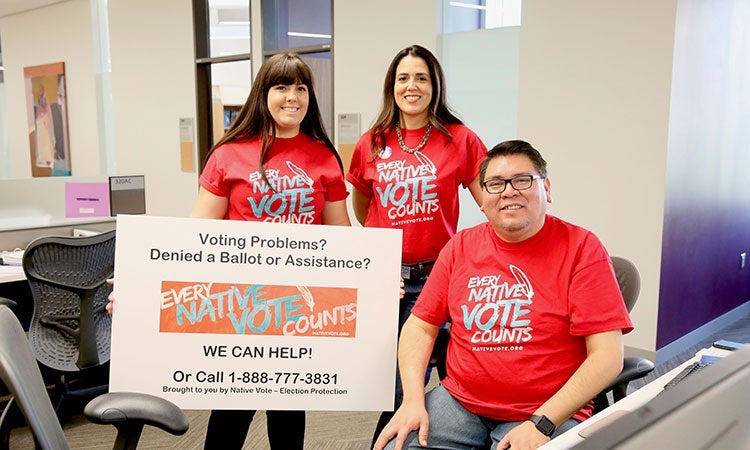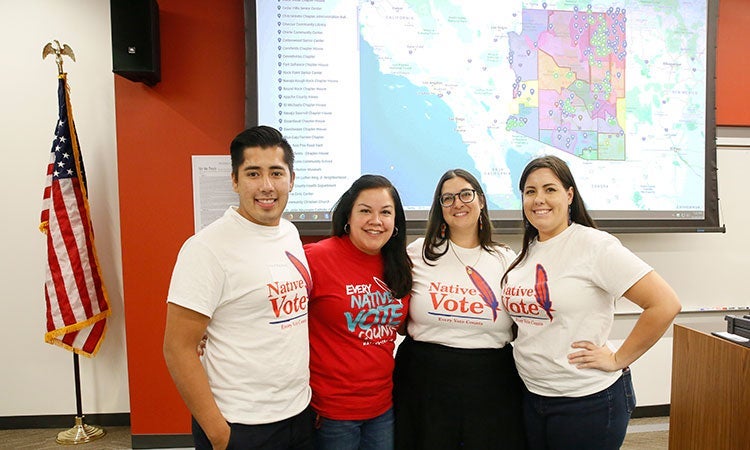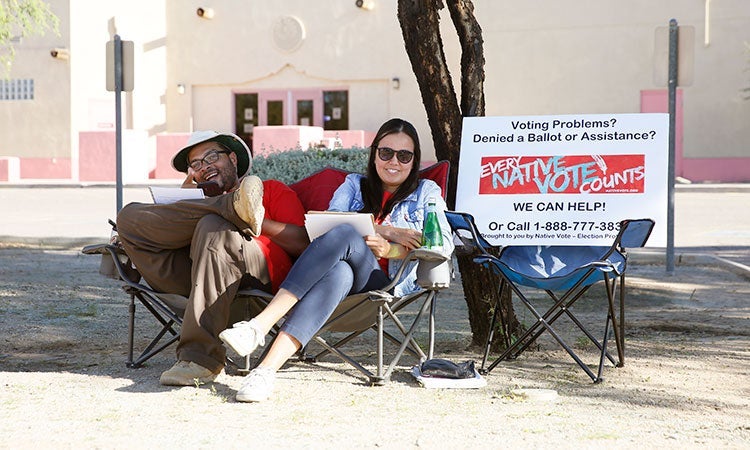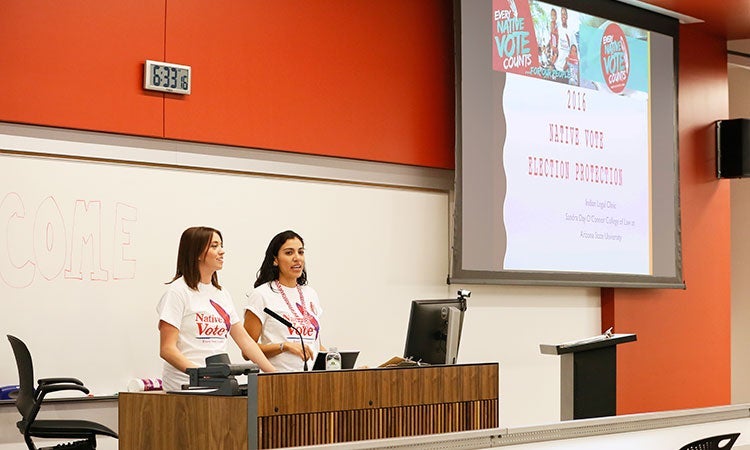The Arizona Native Vote Election Protection Project collects data on barriers to voting for Native Americans in Arizona. This effort is led by the Indian Legal Clinic. Additionally, the Clinic leads Arizona Native Vote’s publication of election reports. Our election reports outline the election protection plan for each election cycle, provide a summary of election incidents and litigation, and analyze turnout among Native American voters. Such reporting and data tracking is critical given the data gap in Indian Country.
ILC Native Vote Reports
In 2019, the Arizona Native Vote Election Protection Project became a full-time effort with the Native Vote Fellowship program. The Native Vote Fellowship program allows Arizona Native Vote to have year-round dedication to efforts such as election access, public policy, election litigation, redistricting, community organizing, public education, Tribal elections, and government level advocacy aimed at protecting and promoting the rights of Native American voters in Arizona.
On election day, the Arizona Native Vote Election Protection Project runs its incident command center. The command center includes volunteers that field calls to the Arizona Native Vote hotline, dispatches emergency volunteers to polling locations where Native Voters are encountering problems when voting, reports ongoing incidents to appropriate county and state officials, coordinates emergency legal actions, and coordinates with other volunteer election protection programs to respond to incidents.
The U.S. Constitution requires states to redraw their congressional and state legislative district boundaries every 10 years following each decennial Census. The goal of redistricting is to protect the constitutional right to “one person, one vote” by ensuring that each district has approximately the same number of people. In Arizona, the Independent Redistricting Commission (IRC) is tasked with redrawing the State’s congressional and state legislative districts.
Native Vote Fellow Blair Tarman-Toner tracked the IRC’s deliberations over the course of its fourteen (14) decision-making meetings, as well as tracked the public comments made at thirty-two (32) public hearings hosted by the IRC. Additionally, the Indian Legal Clinic (ILC) regularly presented to Tribes on the redistricting process, assisted Tribes in drafting public comments, and submitted oral and written comment regarding the importance of complying with the Voting Rights Act, maintaining a strong Native American majority-minority legislative district, and respecting reservation boundaries as communities of interest.
On January 21, 2022, the IRC approved Official Congressional Map Version 14.0 and Official Legislative Map Version 17.0 as Arizona’s final approved maps. Under the final legislative map, Legislative District 6 is Arizona’s only Native American majority-minority district. Legislative District 6 has a total population of 225,436 and is under-populated by 5.43% to ensure that Native American voters have the opportunity to elect a candidate of their choice. The Native American Citizen Vote Age Population for Legislative District 6 is 63%, and the District includes nine (9) of Arizona’s twenty-two (22) Tribes.






